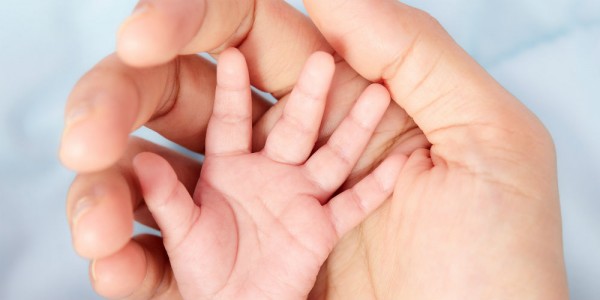My husband and I parented our foster daughter, VV, for 10 months: from the age of 6 to 16 months. During this time, we had ongoing contact with VV’s family, especially her young mother. It wasn’t clear whether or not we’d be able to adopt VV at first. We assumed that we would until proven otherwise. So in the meantime, we did what we could to form a proper attachment with our little girl.
We were obligated to have VV in daycare during the week, but in the evenings and on the weekends, she was all ours. Before she became too heavy, I loved to carry her in a baby carrier, especially when walking our two dogs. It was like a never ending hug, and I loved it! Judging by the quiet way she’d cuddle up against me or my husband, I’d have to say that she loved it, too.
Bath time was a little traumatic, as VV was afraid of getting water in her eyes. With time, though, she began to enjoy playing in the water and tolerated having her hair shampooed. The shampooing wasn’t our favorite activity, but doing her hair was oodles of fun! I know I love to have my head massaged, so I hope she enjoyed our “salon meetings,” too.
Because we kept her in cloth diapers while at home, we had to change her more frequently. She never developed diaper rash on our watch, and we prided ourselves on surrounding her skin with safe materials whenever possible. The frequent diaper changes also allowed us a chance to play “patty cake” with her feet or give her raspberries on her belly.
She had regular naked belly time before she learned to crawl, and she started experimenting on the potty at the ripe young age of 8 months. We did this to give her opportunities to feel comfortable in her body, not to try to rush her to potty train. I’m happy to report that VV began to head for the bathroom, where we kept her potty, whenever she had to go #2, and we didn’t have to change diapers as frequently as otherwise would’ve been necessary.
Our bedtime routine involved cuddling with a bottle in a rocking chair as I sang to her and then hummed as she drifted off to sleep. I would gently caress her hair or let her hold my finger. I took the time to just be with her, not to rush her, and enjoy spending this time together.
I’m convinced that all these various ways we attempted to connect to VV allowed her to form a healthy attachment to us. Granted, it made our separation that much more heartbreaking, but we know that she was with us during a crucial time in her development, and because we were able to provide at least a little bit of attachment parenting for her, she was able to transfer these skills to her birth family after she was reunited with her mom.
Would we have done anything differently had we known that we would not get to watch her grow up and tell her stories about our time together when she was a baby? I don’t think so. I think the time we spent together was its own reward. I can’t imagine not treating a foster child as if they were my very own for keeps. That’s why my heart won’t let me foster again.
Kudos to foster parents able to love through the repeat heartaches. Sadly, I met many foster parents who opted to not get attached to their foster kids, presumably in an effort not to have their hearts broken when the kids left. These I call “foster care providers” and not “foster parents” because parents sacrifice their own well-being for the sake of the child. As for me, my heart simply wasn’t big enough to do both–to love them and let them go.

